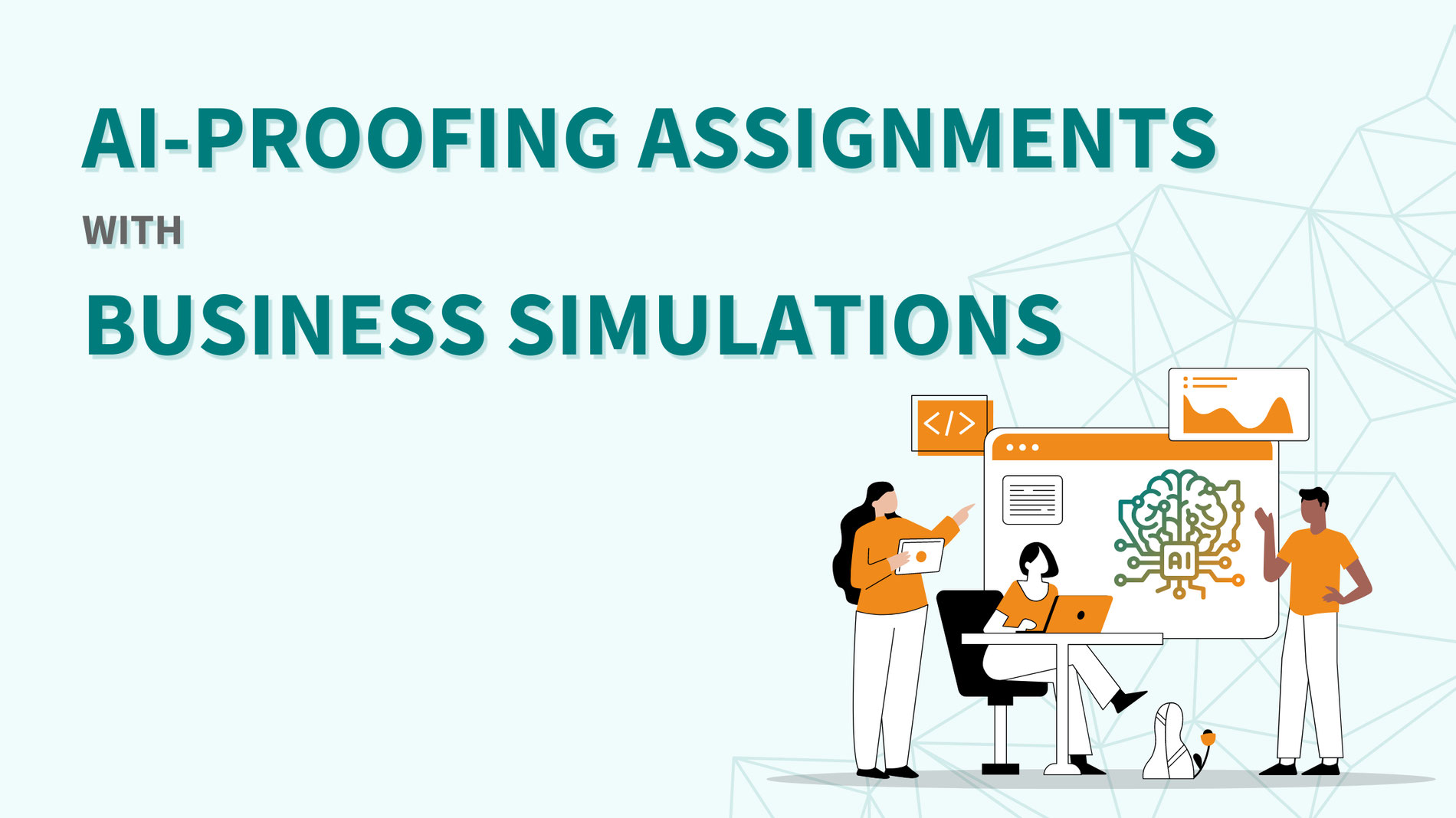
AI-proofing assignments with business simulations
Earlier this year, a Texas A&M professor failed his entire class of seniors. The reason? He claimed that every single student had used Chat GPT to write their mandatory assignments.
Luckily it doesn’t get this dramatic in most classes, but every educator is now faced with how to cope with AI-tools like Chat GPT.
There’s one method of assessment that you can be sure is completely AI-cheat-proof: business simulations.
Business simulations as assessment
"It’s a big problem at our university that students use AI to do their work for them", says Professor Thomas Martin who teaches the introductory finance course at Hult International Business School.
"They’ve even shown me what they do to avoid getting detected by Turn It In [a plagiarism detection provider]. We’ve just decided that we can’t use written assignments as a big part of the assessment anymore."
45% of the grade in his course is set based on their use of the Hubro Business simulation. The simulation lets the students manage their own virtual business through several rounds where they make different financially related decisions. Thomas started using the simulation even before AI became a challenge.
"We’ve been moving away from traditional exams and are introducing more practical real-world assessments for a while. Business simulations check all the boxes of what we’re looking for", says Prof. Martin.
It’s a big problem at our university that students use AI to do their work for them (..) We cant use written assignments as part of the assessment anymore
How it works
There are several ways that a business simulation can be used for assessment:
1. Simulation performance
You can measure the students’ performance which can be somewhat useful. Though this doesn’t necessarily capture how well the students have understood each concept.
2. Theoretical assignments
Another way is that you can add exercises to the business simulation which challenge the students on a particular concept. Our Smart assignments give students questions related to their own business - meaning that the right answer will be different for each team.
3. Practical assignments
Lastly, you can have the students make reports or presentations about their decisions. Thomas’ course relies on this approach. After the simulation has finished each team makes a presentation where they include their analysis, strategy, results and reflections from the business simulation.
When one team is presenting, the other students have to submit both positive and constructive feedback to the presenters. Or they’ll miss out on points on the examination as well.
"It’s one of many ways that we’re incentivizing the students to be engaged. We also give them points for submitting their notes from class. That way they’re rewarded for participation", explains Thomas.
None of the parts of their business simulation-based assessment can be solved using an AI - the AI can’t access the closed-off business simulation.
The AI can’t make decisions in the business simulation for them and it can’t make their presentation or present it in front of the class. Even if the students exported the data from and tried pasting it into Chat GPT the bot wouldn’t give them a useful answer.
Thomas is just one of many educators that have made Hubro’s business simulations part of his assessment – we’re thankful that he has let us share his use case in this article.
The challenge of big classes (and our coming solution)
The biggest issue with this method of assessment is that it requires a lot of work if you have a big class. That being said, a lot of our users think it’s worth it. One of our users has just short of 500 students annually and has each team of three make video presentations as their deliverable.
If you would like to avoid assessing hundreds of presentations, don’t worry. By the end of the year we’ll release new smart assessment features that let you automatically assess how well your students understand concepts based on the decisions they make. Even for written assignments.
Intrigued? Sign up for our newsletter to be among the first who can see and try the features, or book a demo below.
Book a free trial meeting to see how it works
Get a free trialExplore more of our blog for business education, educational business simulations and remote teaching methods.
Back to the blog